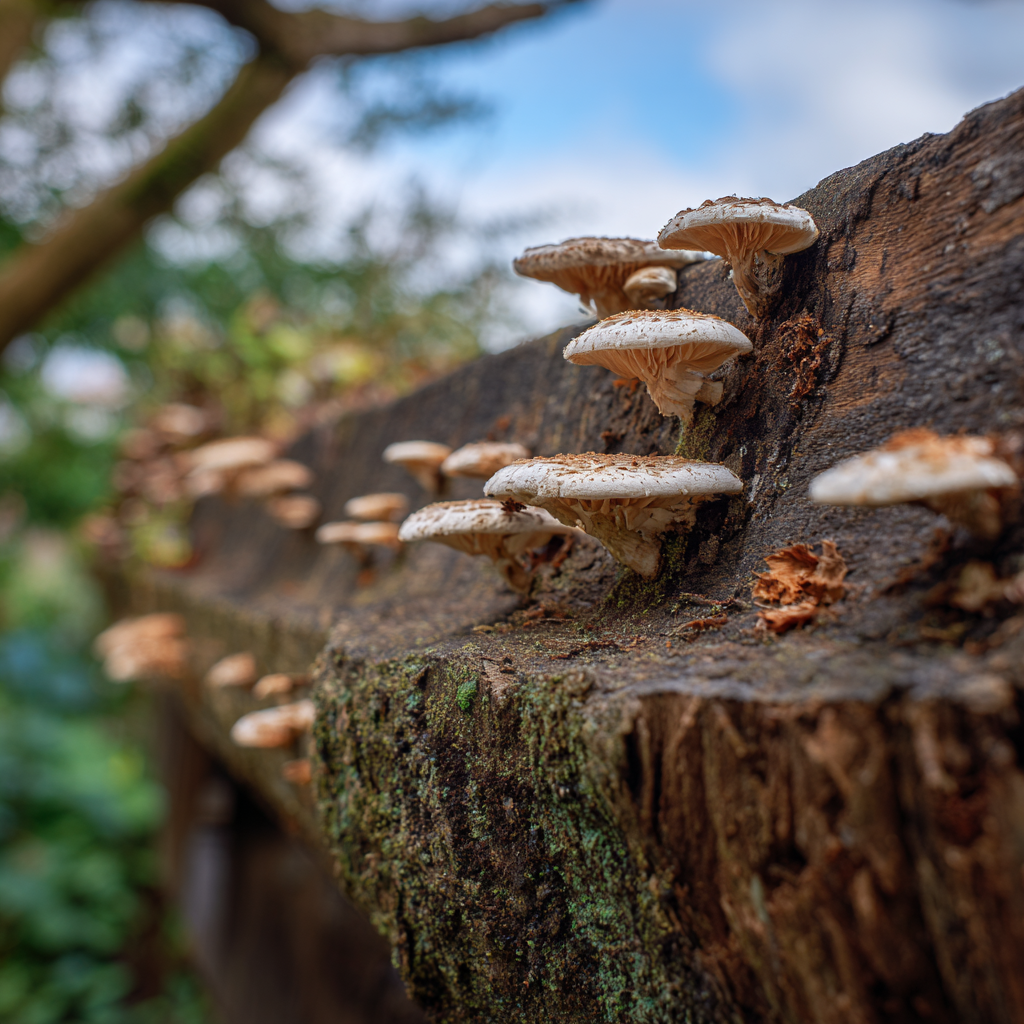
Turning Invasive Trees into Profits: How Shiitake Mushroom Cultivation Can Transform Farm Waste
06/22/25Share
📖 Article Summary: From Invasive Pest to Profitable Crop
🎯 Key Takeaways:
- Economic Opportunity: Specialty mushrooms sell for $20-$24/pound, creating revenue from waste
- Environmental Benefits: Accelerated decomposition replaces harmful burning practices
- Research Results: Chinese tallowtree produces larger individual mushrooms than oak
- Triple Win: Invasive species control + waste reduction + high-value crop production
- Market Potential: Growing demand for sustainable and innovative farming methods
Table of contents
The Problem with Invasive Tree Species
Invasive tree species like Chinese tallowtree (Triadica sebifera) have long been considered ecological nightmares for landowners and farmers. These unwanted invaders are expensive to remove, wasteful to discard, and detrimental to native biodiversity. For many small farmers, dealing with invasive tree infestations feels like throwing money into a bottomless pit.
But what if these same problematic trees could become a source of income instead of just expense?

Breakthrough Research: Invasive Trees as Mushroom Substrates
Groundbreaking new research published in Invasive Plant Science and Management suggests that invasive trees could become an unlikely ally for small farmers. A comprehensive two-year study reveals that nonnative trees, particularly T. sebifera, can serve as highly effective substrates for growing shiitake mushrooms—essentially turning ecological liabilities into valuable economic assets.
This discovery could revolutionize how farmers approach both invasive species management and specialty crop production.
Chinese Tallowtree vs. Traditional Oak: The Surprising Results
For decades, oak (Quercus spp.) logs have been considered the gold standard for shiitake mushroom cultivation. However, this innovative study demonstrated some fascinating differences between traditional and invasive tree substrates:
“Utilizing edible fungi to recycle invasive nonnative trees transforms a detrimental constituent on small farms into an income-producing natural resource.”
Environmental Benefits of Invasive Tree Mushroom Farming
The advantages extend far beyond economics. Using invasive trees for mushroom cultivation creates multiple environmental benefits:
Accelerated decomposition: Mushroom cultivation speeds up the natural breakdown of cut logs, returning nutrients to the soil more quickly than traditional disposal methods.
Reduced land clutter: Instead of piling up invasive tree debris, farmers can put these materials to productive use, keeping their land clean and organized.
Sustainable alternative to burning: Many farmers resort to burning invasive tree matter, which releases carbon and can create air quality issues. Mushroom cultivation offers a carbon-neutral alternative that actually sequesters carbon in the growing medium.
The Economic Opportunity: Specialty Mushroom Market Potential
The financial case for invasive tree mushroom farming becomes even more compelling when considering current market prices. Specialty mushrooms like shiitake can command premium prices, with some markets seeing $20–$24 per pound for fresh, high-quality specimens.
For small farmers looking to diversify their income streams, this represents a significant opportunity. The combination of free substrate material (invasive trees that need removal anyway) and high-value crop output creates an attractive profit margin that few other specialty crops can match.
A Triple-Win Strategy for Modern Agriculture
This research highlights what agricultural experts are calling a "triple-win" opportunity for modern farming operations:
1. Invasive species mitigation: Actively removing and utilizing invasive trees helps restore native ecosystem balance while generating income.
2. Waste reduction: Converting tree debris into productive growing medium eliminates disposal costs and reduces on-farm waste.
3. High-value crop generation: Producing specialty mushrooms creates a premium income stream that can significantly boost farm profitability.
The Future of Sustainable Mushroom Cultivation
As more growers seek sustainable and innovative cultivation methods, invasive-tree mushroom farming could become a cornerstone strategy in the modern agricultural playbook. This approach addresses multiple challenges simultaneously while creating new opportunities for rural economic development.
Early adopters of this technique may find themselves at a significant competitive advantage, combining environmental stewardship with profitable production in ways that traditional farming methods simply cannot match.
For farmers currently struggling with invasive tree species, the message is clear: your biggest headache could become your next cash crop. The key is recognizing the hidden value in what was once considered worthless waste.
Oak logs: Produced higher overall mushroom yields, maintaining their reputation for quantity production.
Chinese tallowtree logs: Generated mushrooms with significantly greater individual size and comparable quality to oak-grown specimens.
For farmers already dealing with invasive tree infestations, this means access to an additional revenue stream without the need to source and purchase traditional substrates. The cost savings alone could make mushroom cultivation financially viable for operations that previously couldn't justify the investment.
“Although the number of mushrooms was fewer on T. sebifera logs, the weight of individual mushrooms was greater—highlighting quality over quantity.”
Getting Started with Invasive Tree Mushroom Farming
Farmers interested in exploring this opportunity should consider starting with small-scale trials using available invasive tree material. While the research focused specifically on Chinese tallowtree, the principles may apply to other invasive species common in different regions.
This innovative approach to invasive species management and specialty crop production represents the kind of creative problem-solving that modern agriculture needs. By turning ecological problems into economic solutions, farmers can build more resilient and profitable operations while contributing to environmental restoration.
